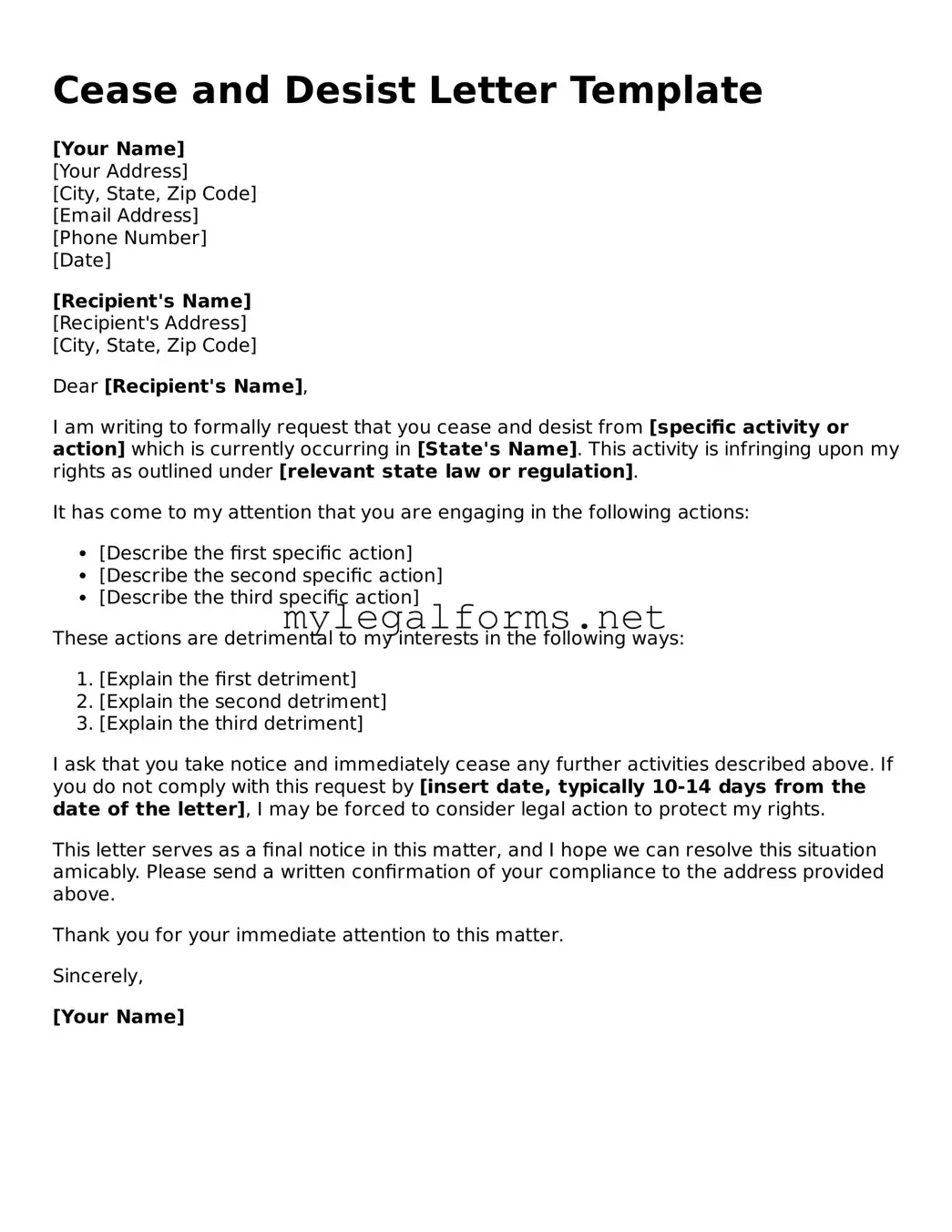Cease and Desist Letter Template
[Your Name]
[Your Address]
[City, State, Zip Code]
[Email Address]
[Phone Number]
[Date]
[Recipient's Name]
[Recipient's Address]
[City, State, Zip Code]
Dear [Recipient's Name],
I am writing to formally request that you cease and desist from [specific activity or action] which is currently occurring in [State's Name]. This activity is infringing upon my rights as outlined under [relevant state law or regulation].
It has come to my attention that you are engaging in the following actions:
- [Describe the first specific action]
- [Describe the second specific action]
- [Describe the third specific action]
These actions are detrimental to my interests in the following ways:
- [Explain the first detriment]
- [Explain the second detriment]
- [Explain the third detriment]
I ask that you take notice and immediately cease any further activities described above. If you do not comply with this request by [insert date, typically 10-14 days from the date of the letter], I may be forced to consider legal action to protect my rights.
This letter serves as a final notice in this matter, and I hope we can resolve this situation amicably. Please send a written confirmation of your compliance to the address provided above.
Thank you for your immediate attention to this matter.
Sincerely,
[Your Name]
